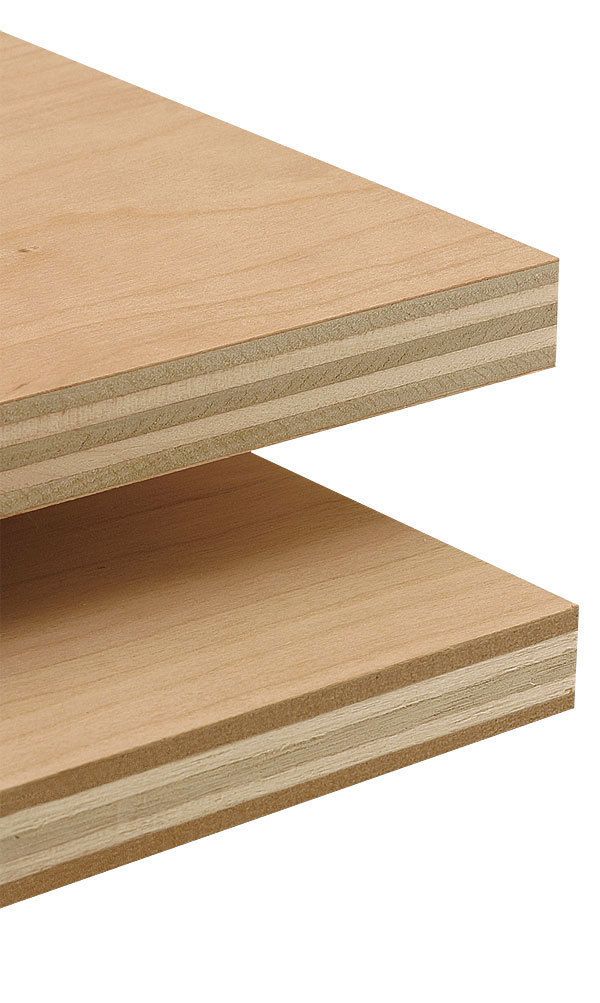
Synopsis: It’s important to balance looks, strength, and cost when choosing sheet goods for a project. Buying the best-looking plywood for every piece of a project can be an expensive proposition, particularly when less pricey sheet goods will do just as good a job or even better for painted cabinetry, drawer bottoms, shop furniture, or woodworking jigs. Sheet goods bring a lot of advantages over solid wood for certain projects. They cost less, are stronger and more stable, and resist warping better than solid wood. They’re also time-savers, since sheet goods needn’t be jointed or planed and are easy to glue and join. Learn the different types and how each should be used.
From Fine Woodworking #225
In my business making custom built-in cabinetry, I use more plywood and other sheet goods than solid wood. Whether I’m building kitchen cabinets, TV enclosures, window seats, or library shelves, manufactured panels of one type or another make up the lion’s share of a project.
The secret to working with sheet goods is to master the balancing act of looks, strength, and cost when buying the material. Buying the best-looking plywood for every piece of a project can be an expensive proposition, particularly when less pricey sheet goods will work just as well, or even better, for painted cabinetry, drawer bottoms, shop furniture, or woodworking jigs.
Sheet goods have a lot of advantages over solid wood for certain projects. When making large or wide surfaces, sheet goods cost less, are stronger and more stable, and resist warping better than solid wood. They’re also timesavers, since they needn’t be jointed or planed. There are dozens of varieties out there, but just four types will cover your needs.
The first is furniture-grade plywood, which is distinguished by its high-quality face veneers. But you pay a premium for that quality, so this material should be saved for surfaces that will be displayed prominently.
Cabinet-grade plywood, which has surface defects like knots, pins, and mineral stains, is cheaper than furniture-grade plywood, and is ideal for painted or hidden surfaces.
Then there’s multi-ply plywood, usually Baltic birch, which is suitable for drawer boxes, jigs, and other shop tasks. last is medium-density fiberboard (MDF), a sheet good made of fine wood particles compressed and glued together. It makes a remarkably flat and inexpensive material well-suited for jigs, shop furniture, and as a substrate for veneering and countertop laminate.
Learning the different ways each is used—along with some lumberyard lingo—will help you pick the best panel for your project.
Pick furniture-grade plywood for large, conspicuous wood surfaces, and then choose a core suitable for how the panel will be used. For open casework, such as a bookcase or fireplace cabinetry, select veneer-core plywood with an A1 or A2 grade. Veneer-core is the lightest of the plywoods and holds screws best, making construction much easier. Because it is light, it is less likely to sag when used for shelving or other long spans. Plus, it’s easier to reinforce its edge by screwing it to a cabinet case or other support. In most cases, go with 3⁄4-in. thickness.
For the full article, download the PDF below.
Fine Woodworking Recommended Products

DeWalt 735X Planer

Ridgid R4331 Planer

AnchorSeal Log and Lumber End-Grain Sealer























Log in or create an account to post a comment.
Sign up Log in